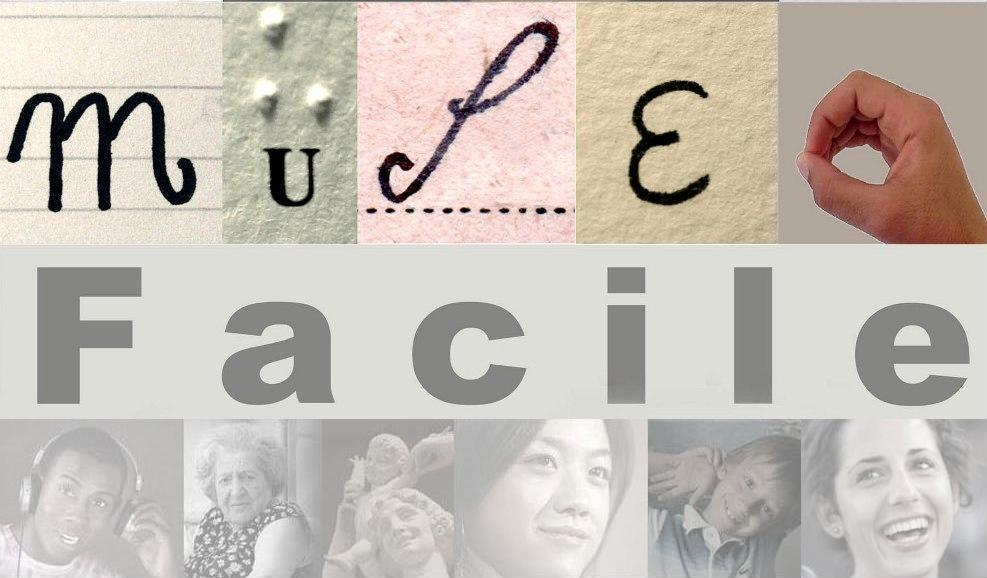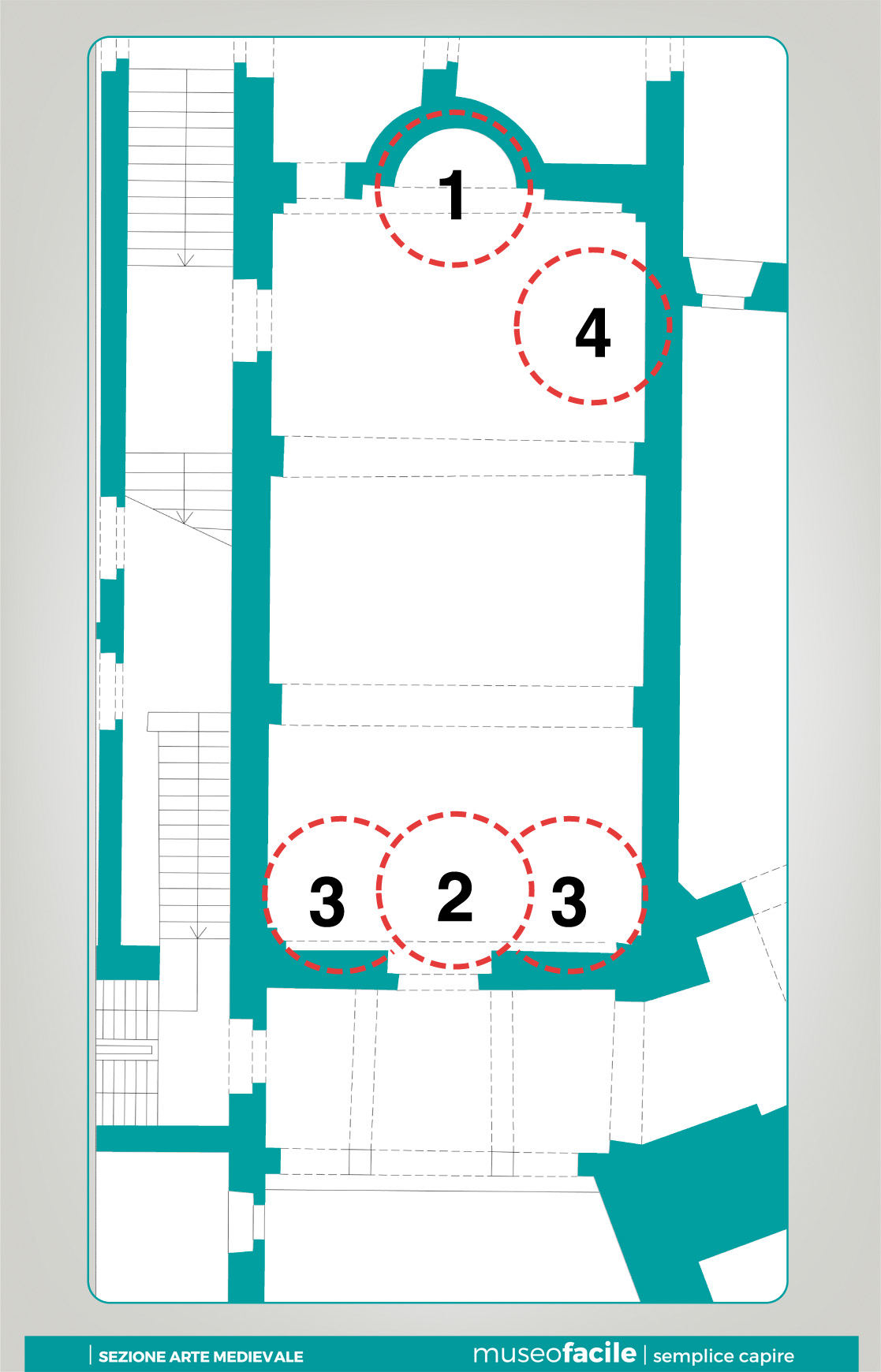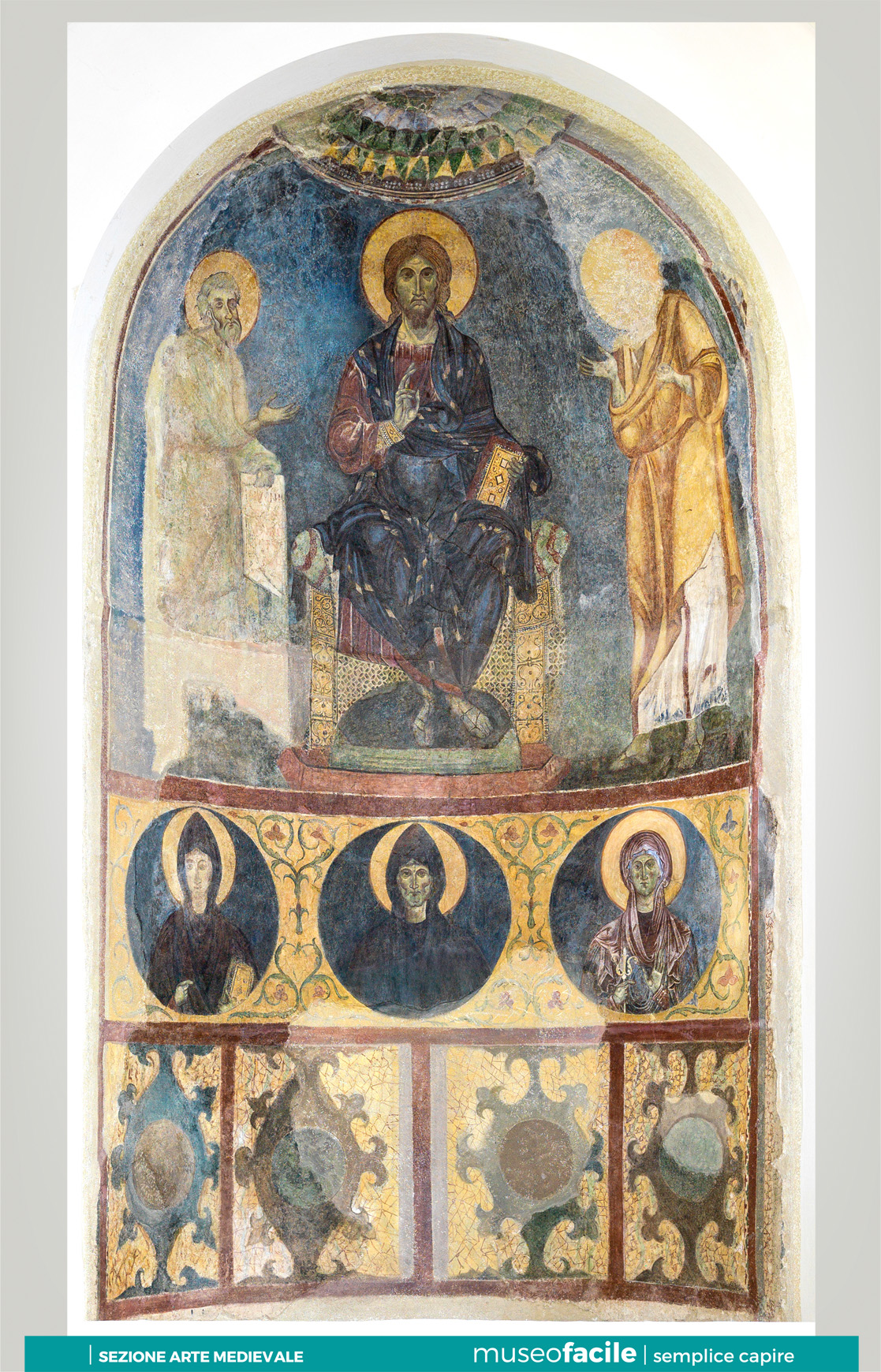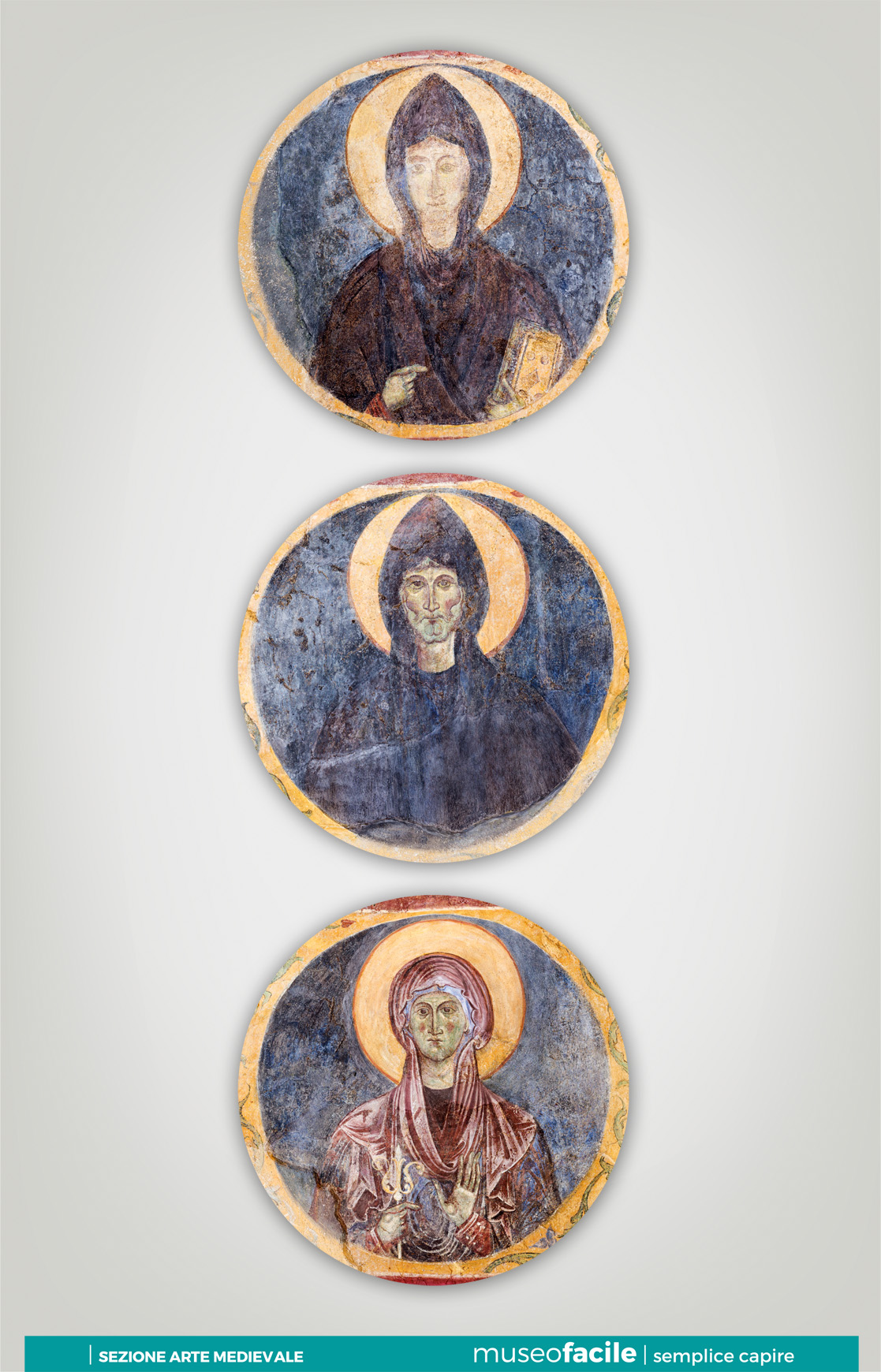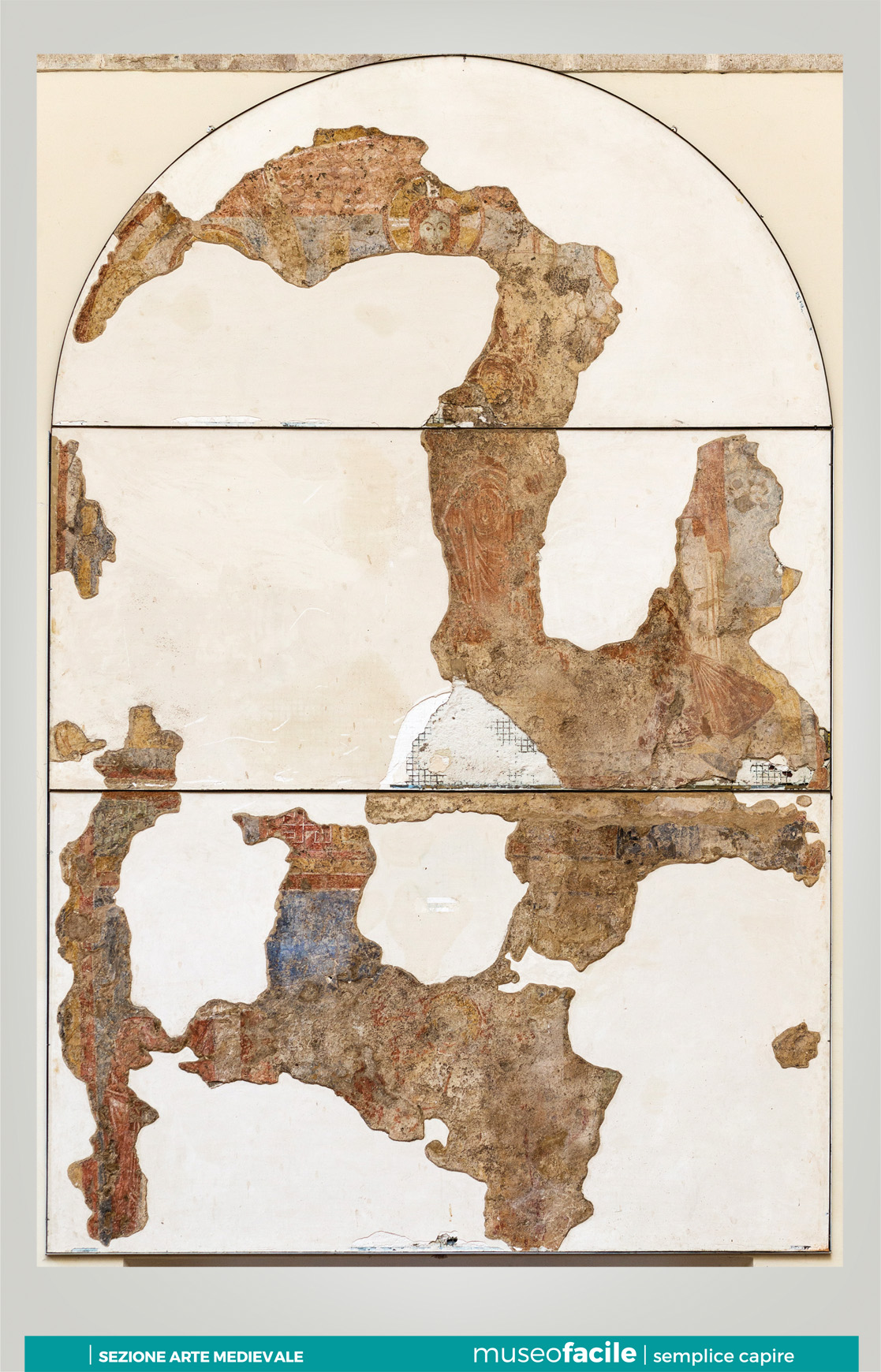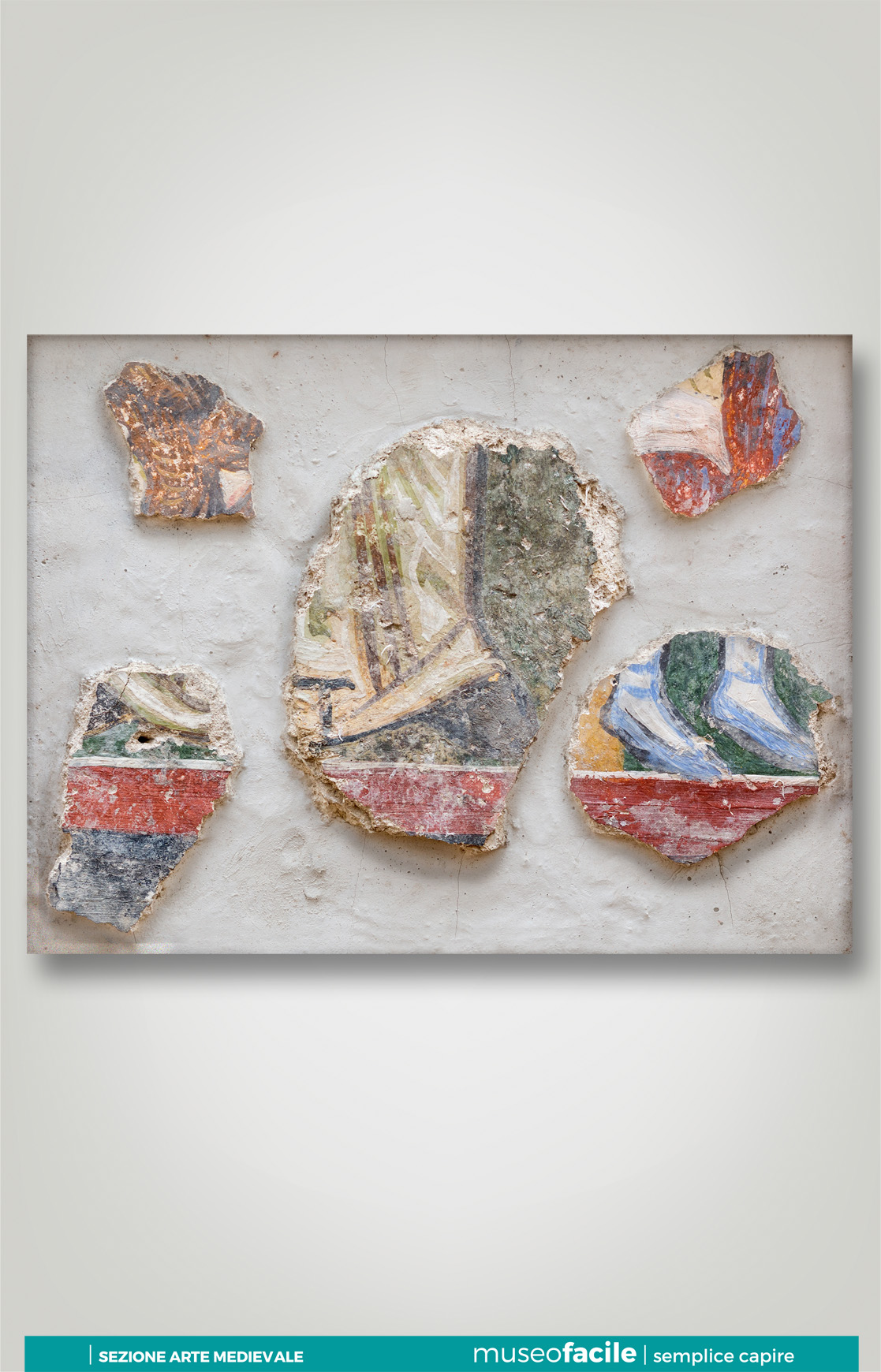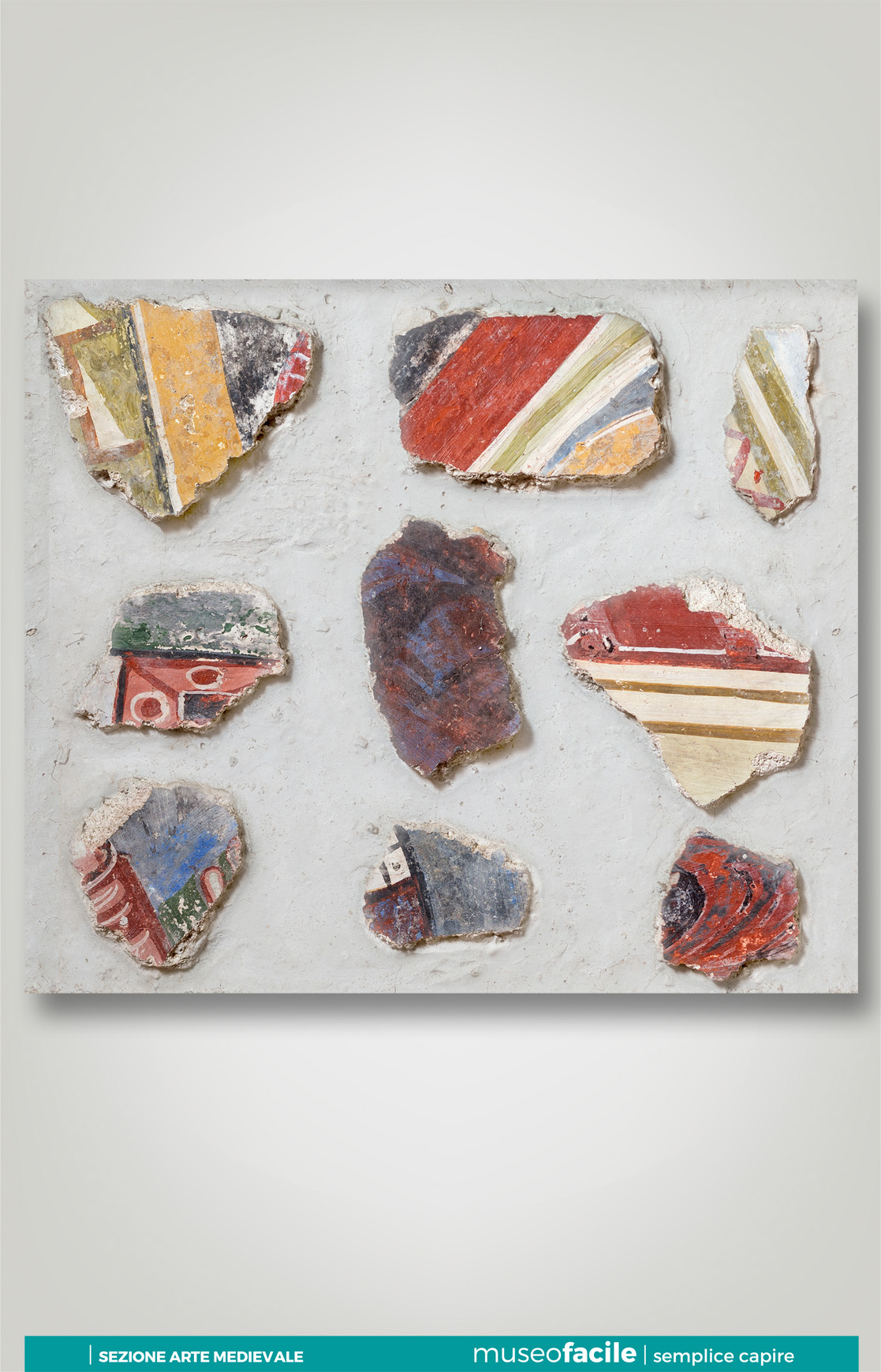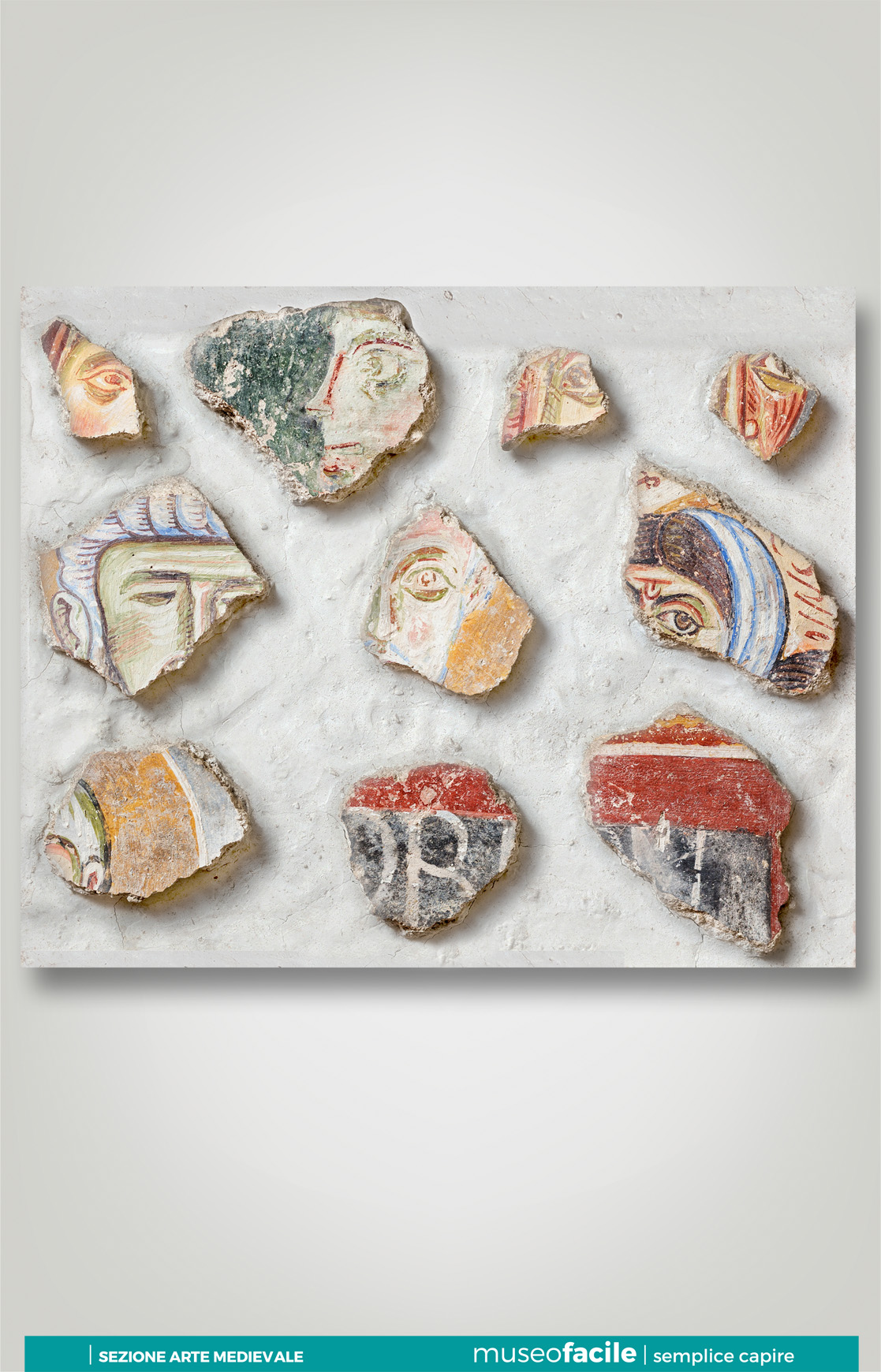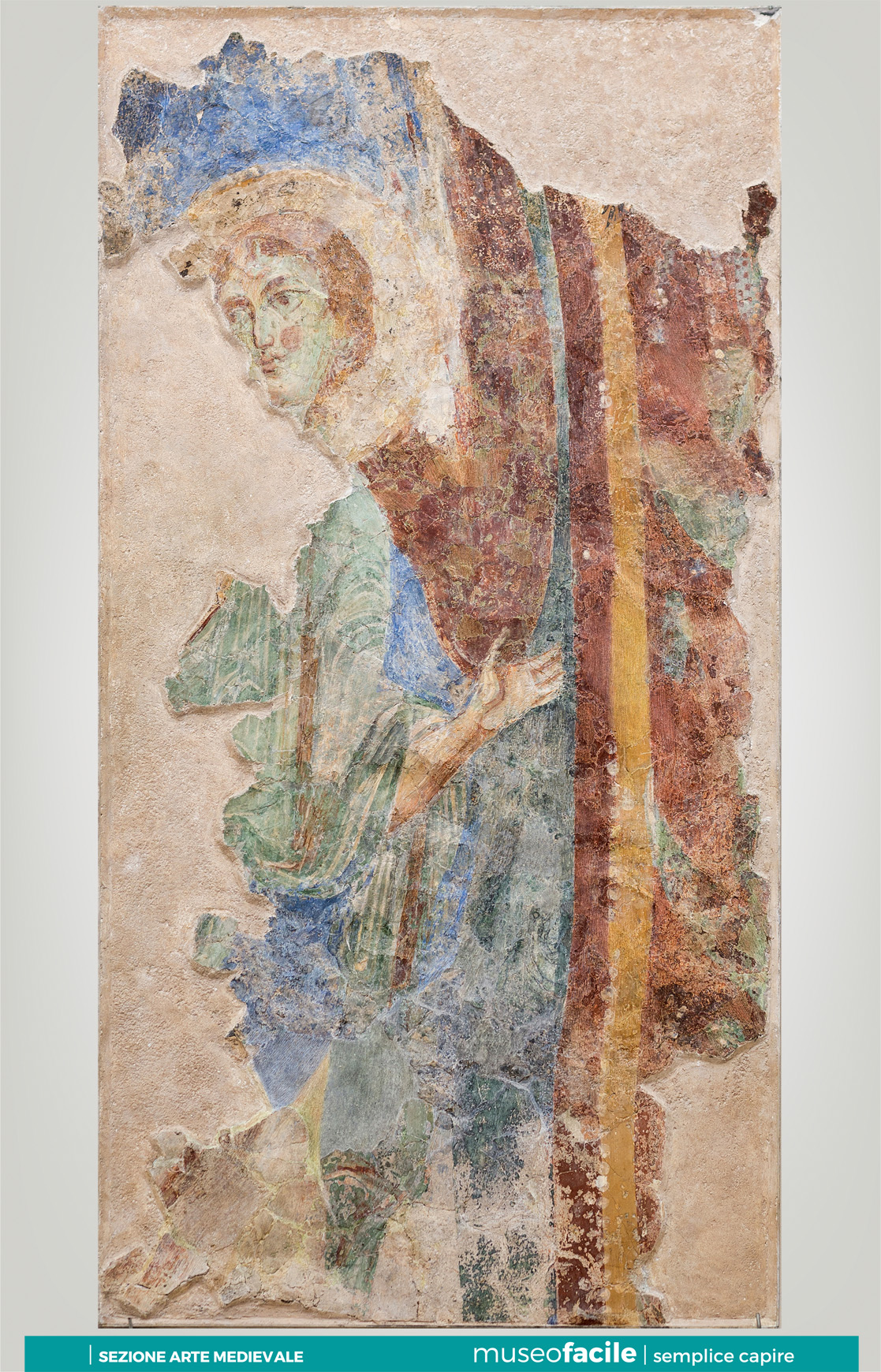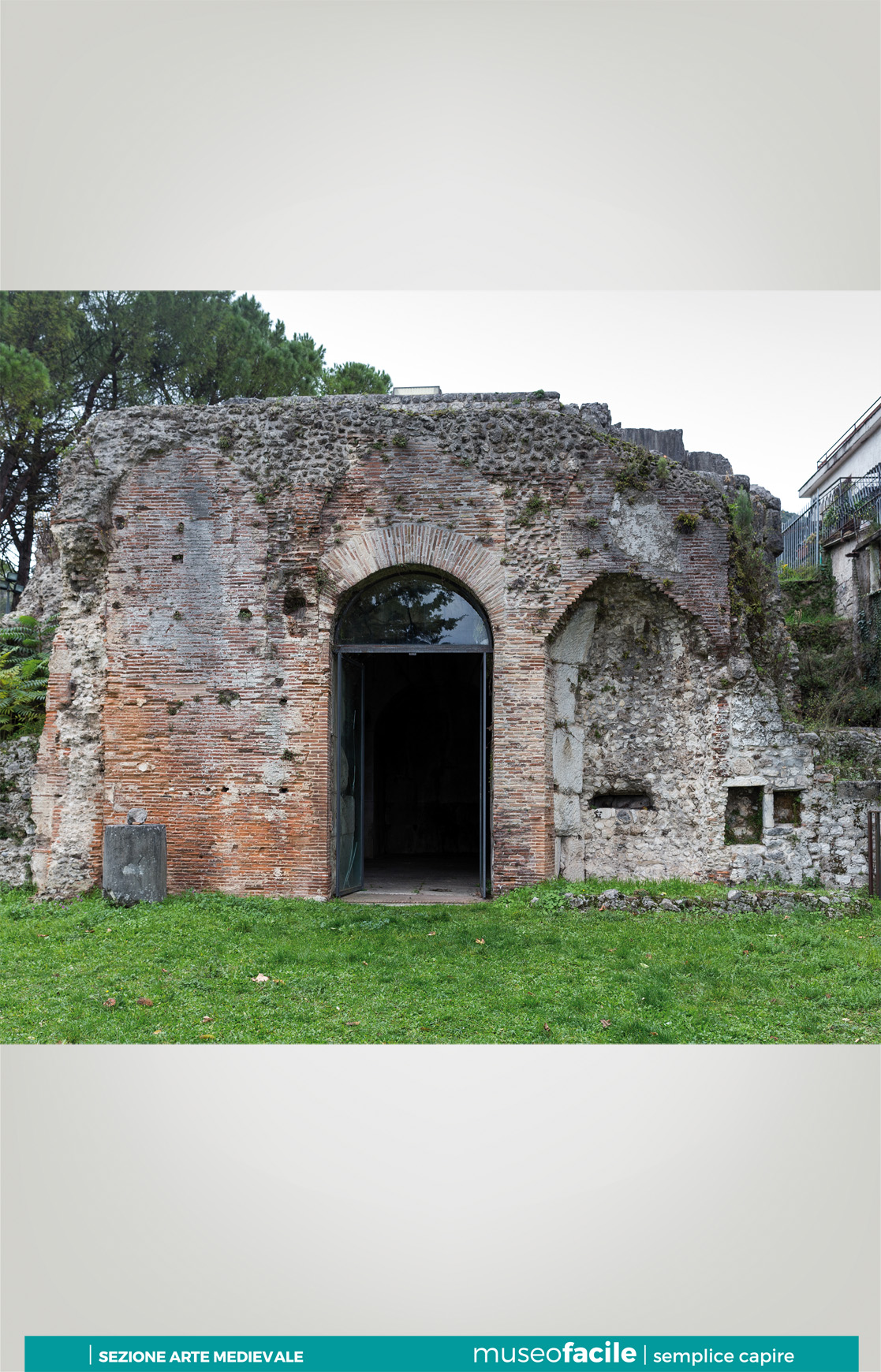Medieval Paintings from the Land of St. Benedict
Location: The Musem of Montecassino, Chapel of St. Anne
Go to Christ Enthroned between the Apostles and Saints Benedict, Scholastica and Maurus
Go to Christ Enthroned between Angels and Saints
Go Fragments of Painted Plaster
Go to the Angel
Go to the Church of the Crucifix
Christ Enthroned between the Apostles and Saints Benedict, Scholastica and Maurus
The painting in the apse of the Chapel of St. Anne comes from the Church of the Crucifix. It is a Byzantine-style work of high artistic value, dating back to the early 13th century.
Its subjects are divided into three registers:
in the first one, at the top, we see Christ enthroned and blessing two apostles in adoration next to him. They are difficult to identify (the most likely hypothesis is Andrew—left—and Peter—right). The figures rest their feet on a heavenly meadow. The background is a dark blue sky dominated at the top by a fan-shaped motif symbolizing the Empyrean (the place of God’s presence);
in the central portion we see the three main representatives of the Benedictine order in half-length portraits: St. Benedict at the center, St. Scholastica (right) and St. Maurus (left);
in the lower there is a wainscoting imitating a polychrome marble paneling.
The painting in its original context at the Chiesa del Crocifisso at San Pietro a Monastero
Christ Enthroned between Angels and Saints
The panel, exposed between the triple lancet window and the door of the Chapel of St. Anne, comes from the Chiesa del Crocifisso (and dates back to the 11th century.
Even though there are only a few fragments, it is possible to reconstruct
the painting’s main themes: there was once, a monumental Christ enthroned, flanked by two angels (or maybe two saints) in the lunette and in the middle. On the bottom-right, a small kneeling donor portrait honored the larger figures;
Below, divided from the top with a band with a meander pattern, you can see the remains of a Virgin and Child (right) and a bishop-saint (left).
Fragments of Painted Plaster
On either side of the Chapel of St. Anne’s door, there are three panels composed of painted plaster fragments (parts of faces, inscriptions and decorative elements) from the 9th-10th centuries.
These are findings from the excavations at Montecassino conducted after World War II under the left nave of the Abbey church near the entrance cloister where the ancient Church of St. Martin once stood.
Angel
On the right wall of the Chapel of St. Anne, under the window nearest to the apse, there is a painting of an angel that recalls the style of the paintings at the Basilica of Sant’Angelo in Formis, near Capua, commissioned by the Abbot Desiderius (1058-1087) in the last decades of the 11th century.
The painting probably comes from the Chiesa di Santa Maria Egiziaca, also called dell’Acqua, a building south of Cassino that was destroyed in the bombings of World War II.
The Church of the Crucifix
Once the Roman mausoleum of the gens Ummidia (1st-2nd century A.D.), the building was converted into a place of worship in 1005 by the monk Theobald before he became abbot of Montecassino (1022-1035).
The Church of the Crucifix was seriously damaged during World War II. These very bombings are at the root of the paintings’ discovery in the structure’s entrance hall. The day after their discovery, the paintings were detached and taken to Montecassino to safeguard them from abandon. Today they are on display in the Chapel of St. Anne.
